Abstract
Ribonucleic acid (immune RNA, iRNA), extracted from the spleens of mice immunized with sheep red blood cells (SRBC), induced specific immunological memory. The humoral immune responses of iRNA-treated animals were compared with in vivo and in vitro primary and secondary responses, using the haemolytic plaque-forming cell (PFC) assay. IgM antibody formation was markedly higher in iRNA-treated than in any other mice. The effect of iRNA was antigen-specific and similar materials from non-immunized mice had no activity.
Full text
PDF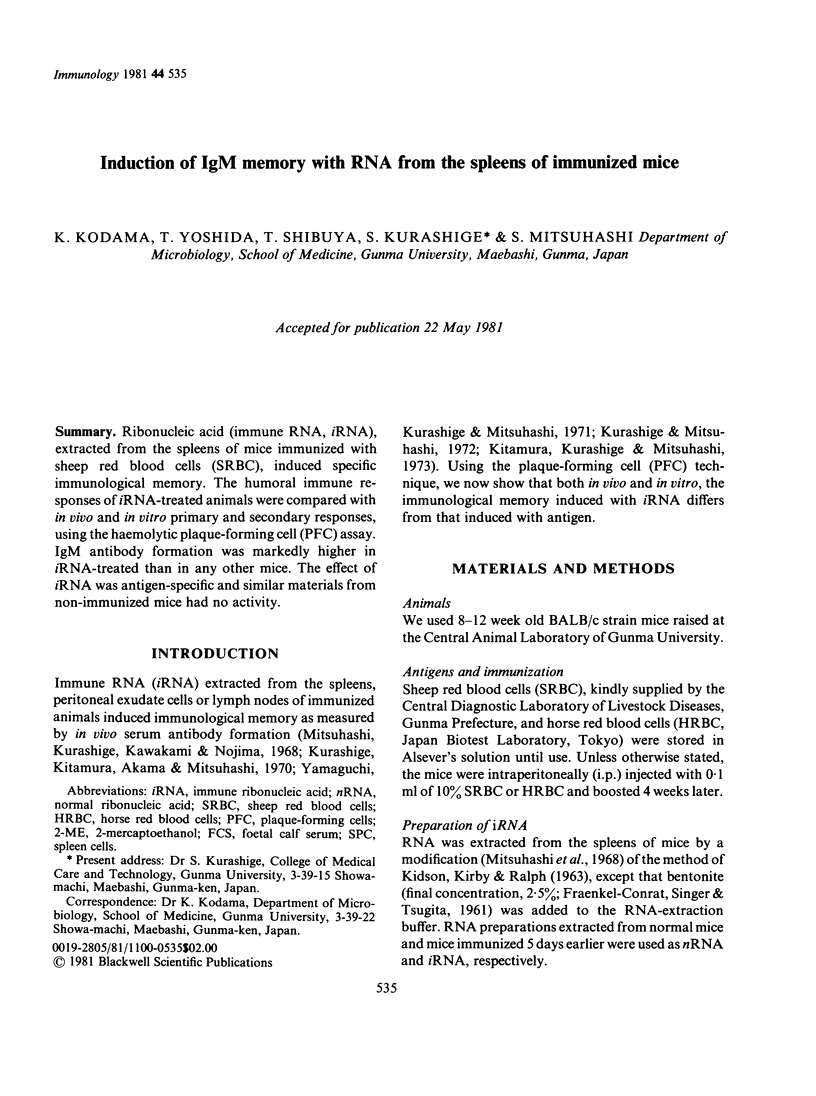

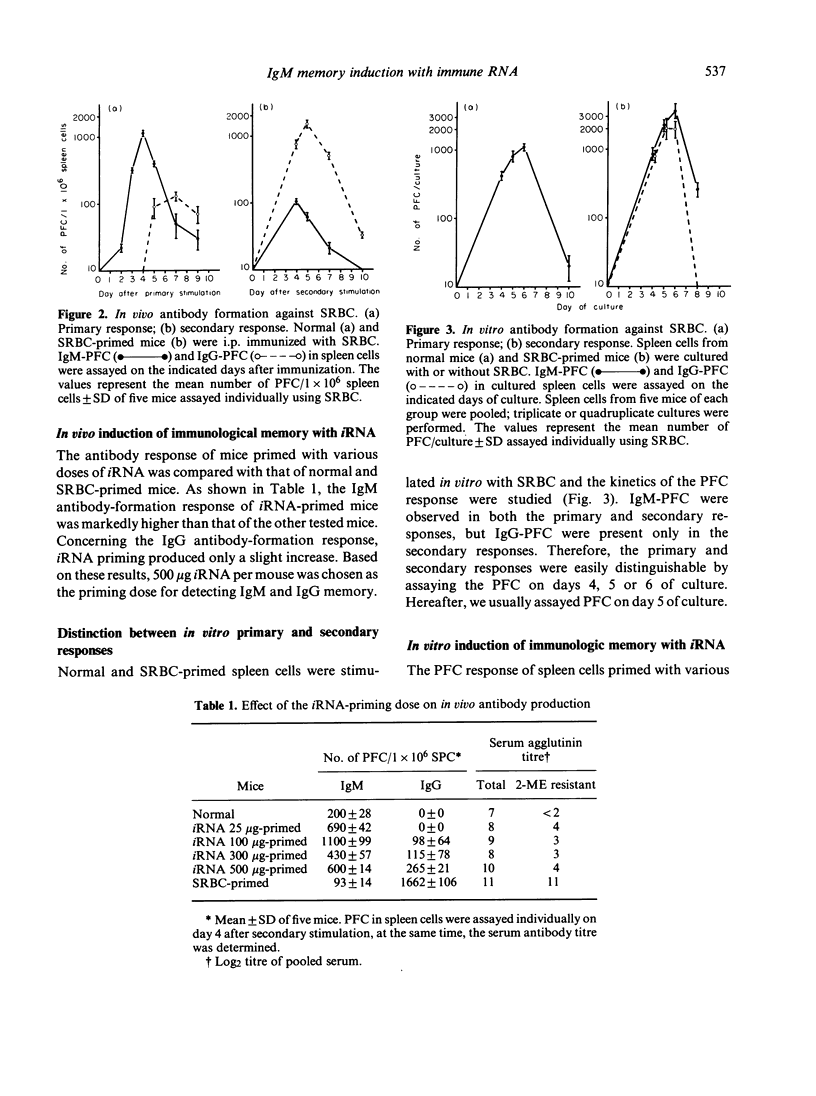
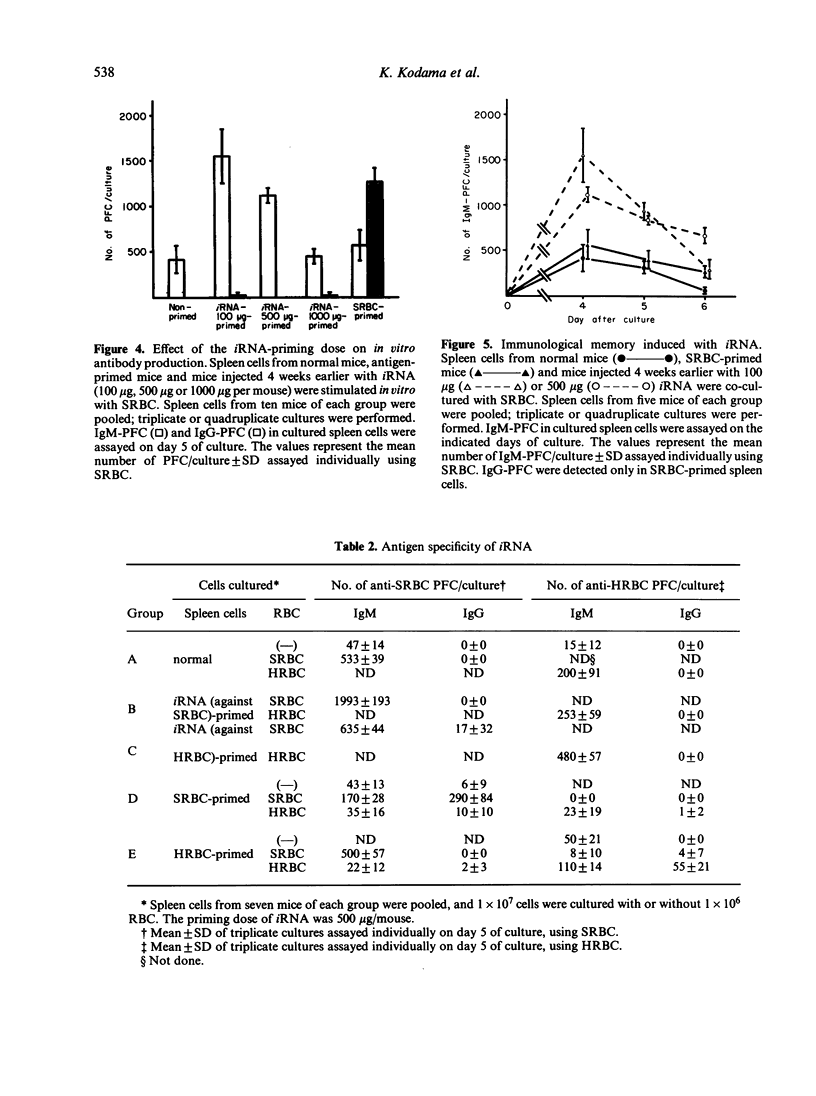

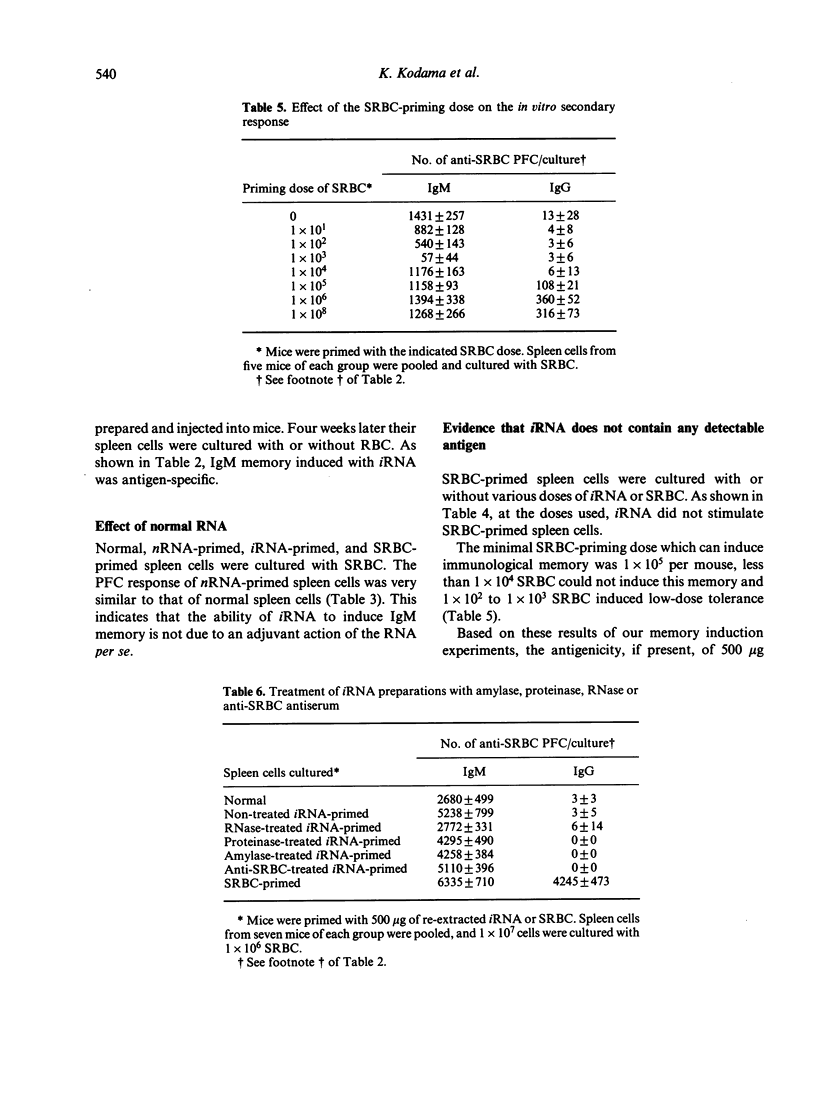
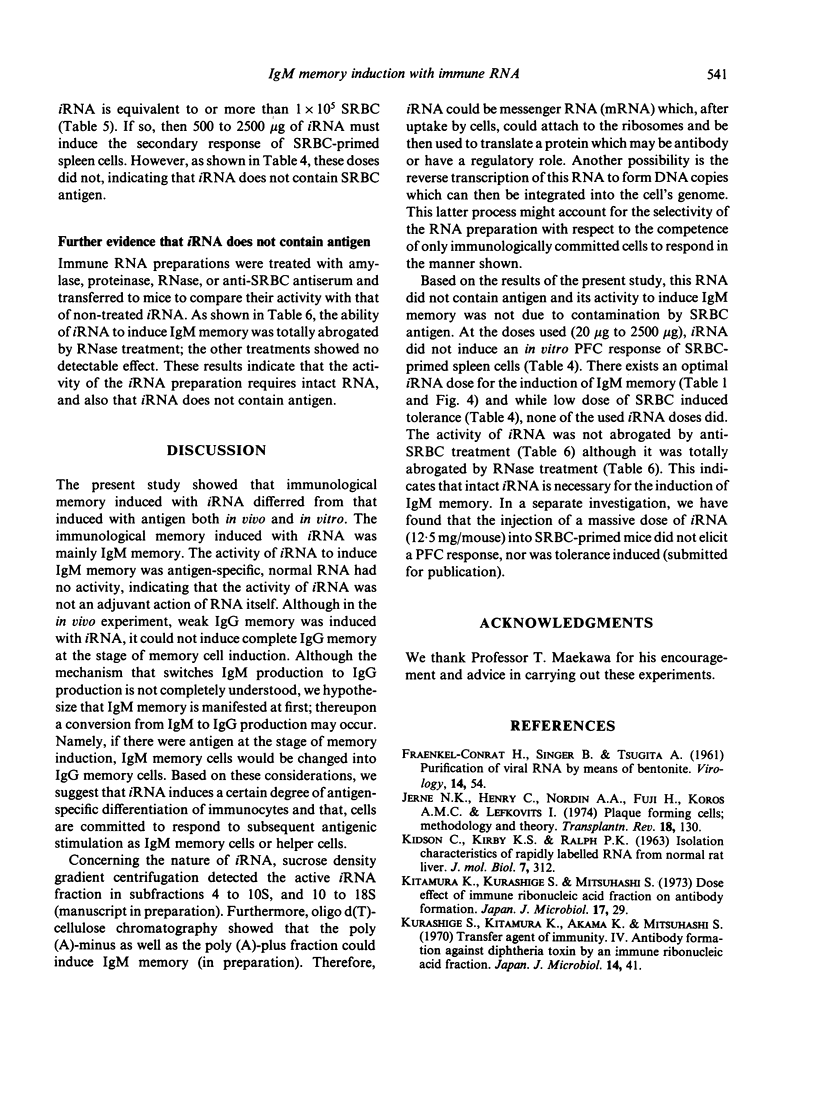

Selected References
These references are in PubMed. This may not be the complete list of references from this article.
- Jerne N. K., Henry C., Nordin A. A., Fuji H., Koros A. M., Lefkovits I. Plaque forming cells: methodology and theory. Transplant Rev. 1974;18:130–191. doi: 10.1111/j.1600-065x.1974.tb01588.x. [DOI] [PubMed] [Google Scholar]
- KIDSON C., KIRBY K. S., RALPH R. K. ISOLATION CHARACTERISTICS OF RAPIDLY LABELLED RNA FROM NORMAL RAT LIVER. J Mol Biol. 1963 Sep;7:312–315. doi: 10.1016/s0022-2836(63)80010-8. [DOI] [PubMed] [Google Scholar]
- Kurashige S., Kitamura K., Akama K., Mitsuhashi S. Transfer agent of immunity. IV. Antibody formation against diphtheria toxin by an immune ribonucleic acid fraction. Jpn J Microbiol. 1970 Jan;14(1):41–47. [PubMed] [Google Scholar]
- Kurashige S., Mitsuhashi S. Serial passive transfers of immune response by an immune ribonucleic acid preparation. J Immunol. 1972 Apr;108(4):1034–1038. [PubMed] [Google Scholar]
- Marbrook J. Primary immune response in cultures of spleen cells. Lancet. 1967 Dec 16;2(7529):1279–1281. doi: 10.1016/s0140-6736(67)90393-5. [DOI] [PubMed] [Google Scholar]
- Mitsuhashi S., Kurashige S., Kawakami M., Nojima T. Transfer agent of immunity. I. Immune ribonucleic acid which induces antibody formation to Salmonella flagella. Jpn J Microbiol. 1968 Sep;12(3):261–268. [PubMed] [Google Scholar]
- Yamaguchi N., Kurashige S., Mitsuhashi S. Antibody formation against Salmonella flagella by an immune ribonucleic acid fraction. J Immunol. 1971 Jul;107(1):99–103. [PubMed] [Google Scholar]


